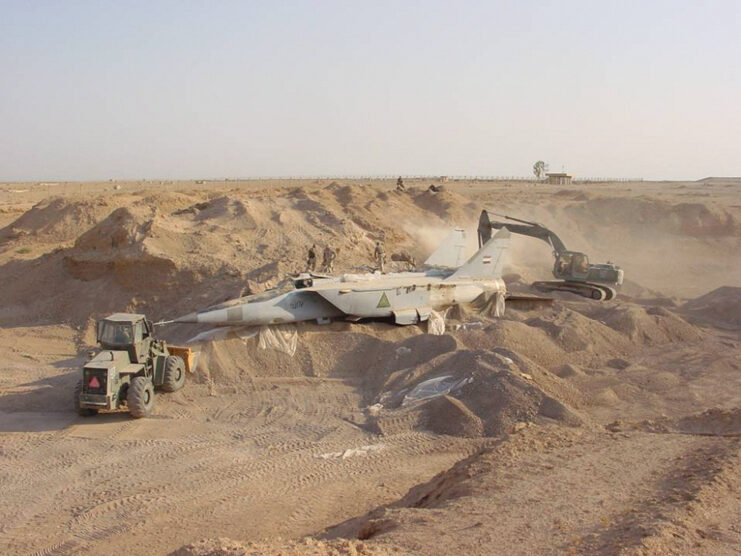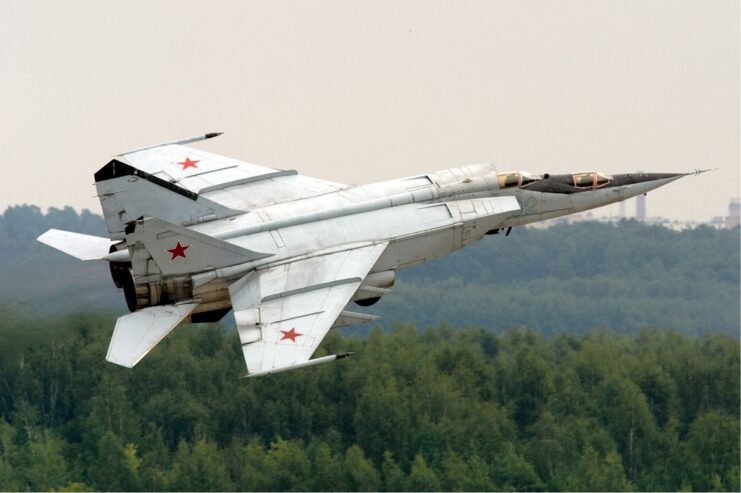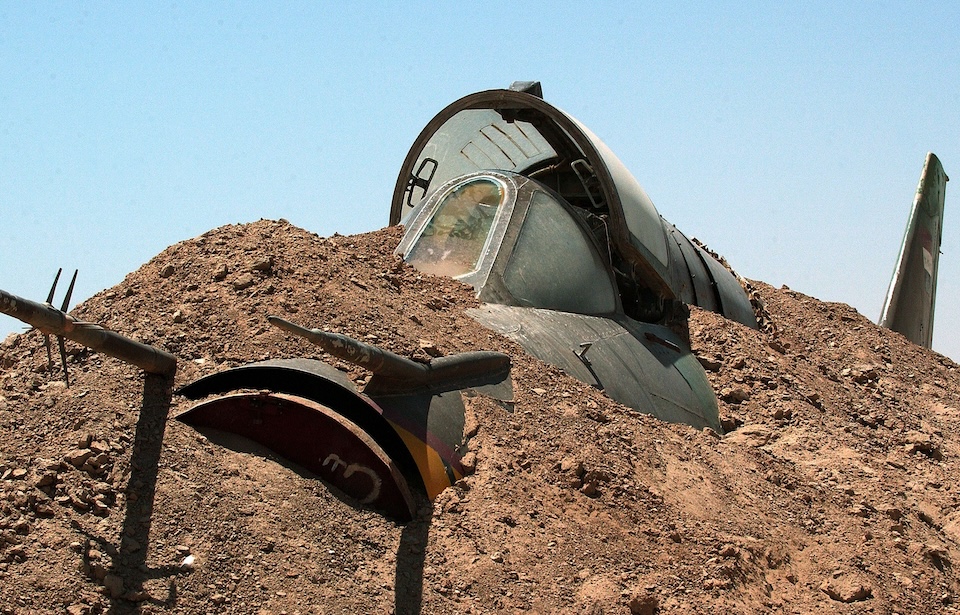The desert often hides secrets, but stumbling upon a Mikoyan-Gurevich MiG-25 is among the most unexpected. Nicknamed “Foxbat” by NATO, this Soviet-era interceptor was engineered for extreme speed and altitude, making it one of the fastest military jets ever produced. Though originally built by the USSR, the MiG-25 eventually became part of the air forces of nations like Iraq, Syria, India, and Algeria.
Among its variants, the MiG-25RB—designated “Foxbat-B”—was specifically adapted for reconnaissance. But this wasn’t just a high-speed spy plane. Equipped to carry up to eight 500-kilogram bombs, the RB model could conduct bombing missions with notable precision, blending intelligence-gathering with offensive capabilities in a single, powerful airframe.

This is the same interceptor shown in the picture above. American troops uncovered it at the start of the Iraq War. In April 2003, they unearthed it from deep underground at Al Taqaddum Air Base, which is in Iraq’s western desert.
Although intelligence reports indicated that items were buried in the area, finding this aircraft was still a surprise. As former Defense Secretary Donald Rumsfeld put it, “We’d heard a great many things had been buried, but we had not known where they were, and we’d been operating in that immediate vicinity for weeks and weeks and weeks… 12, 13 weeks, and didn’t know they were [there].”

Although the MiG-25RB was found in remarkably good condition, it was missing its wings—detached before it was buried and never recovered from the surrounding area. Experts believe Iraqi forces concealed the aircraft in the desert during the 2003 U.S.-led invasion in a last-ditch attempt to keep it from being destroyed or captured. That very MiG-25RB is now located at Wright-Patterson Air Force Base in Ohio, where it is featured as part of a public exhibit.
This discovery wasn’t an isolated case. During the same period in 2003, U.S. troops unearthed several other hidden aircraft, including more MiGs and multiple Sukhoi Su-25 ground-attack planes, all evidence of Iraq’s efforts to shield its air assets from coalition strikes.
More from us: US Naval Aviators Once Complained That NASA Pilots Were Bullying Them
Why bury them instead of using them? Before the invasion, Iraq maintained one of the largest air forces in the region, investing heavily in modern jets, upgraded infrastructure, and state-of-the-art hangars. But as coalition troops approached Baghdad, Iraqi leadership understood that their aircraft stood no chance against the superior firepower and technology of the U.S. military. Rather than see their fleet destroyed in open combat, they opted to conceal it underground. That decision led to the strange and fascinating discovery of warplanes buried beneath the sands.
